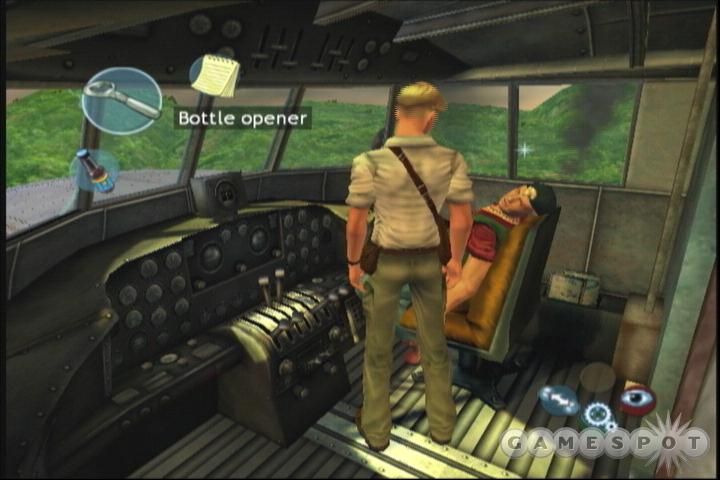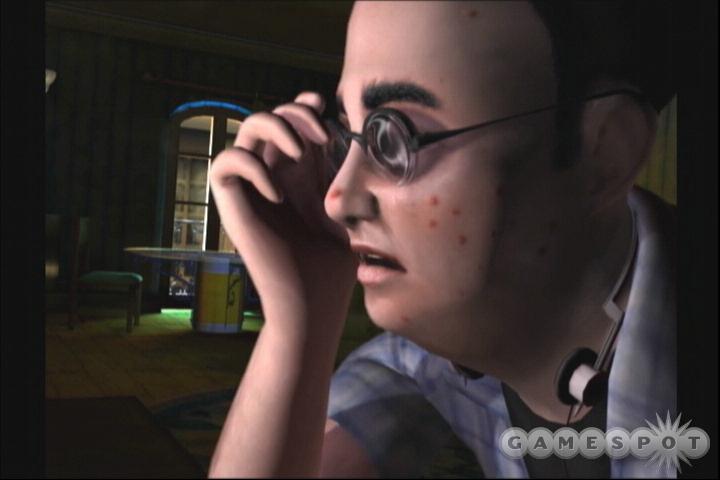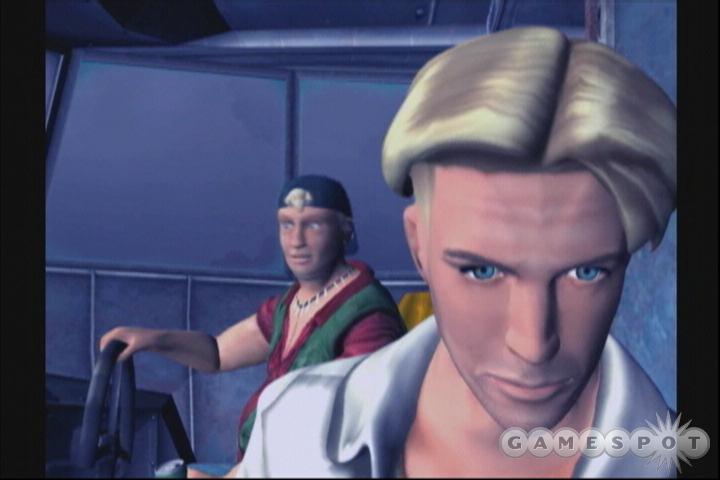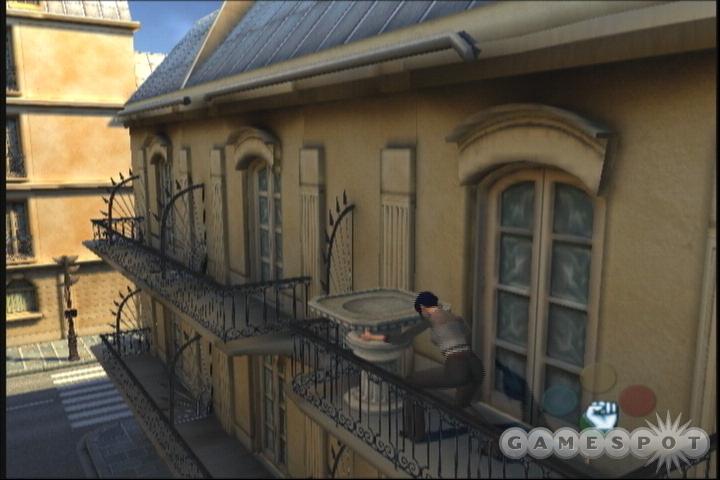PC and console games seem to converge more and more every day. Broken Sword: The Sleeping Dragon is a perfect example. It takes the traditional point-and-click PC adventure and updates it with the contemporary style--and a bit of the action--that you'd expect from a console adventure. It's a game that feels at home in both the PC and console worlds. It's true that Broken Sword isn't hugely innovative and suffers from its share of faults, but its particular blend of features gives it a fresh, fun feel. Just as importantly, developer Revolution Software really understands the classic adventure genre and capitalizes on its strengths. You'll unravel a colorful, witty yarn filled with loveable characters, dramatic encounters, sharp dialogue, and exotic locales.

Broken Sword: The Sleeping Dragon is a loose sequel. The first game in the series, called Circle of Blood in the US and Broken Sword: Shadow of the Templars in Europe, came out on the PC back in 1996 and was ported to the PlayStation a couple of years later. The second game, Broken Sword: The Smoking Mirror, arrived on the PC in 1997 and was again ported to the PlayStation a couple of years after the fact. The latest installment in the series, The Sleeping Dragon, was designed with both the PC and consoles in mind. Moreover, it marks the series' transition from 2D to 3D.
Broken Sword: The Sleeping Dragon wins high points for style, as it often looks like a slickly directed animated film. Vibrant colors, expressive lead characters, and detailed settings all draw you into the game. In fact, the parallels to an animated film show up right from the start of the game. After a dark and mysterious prologue, you see series hero George Stobbart soaring in a plane over the lush jungles of the Congo. With a heroic orchestral theme that builds excitement and well-chosen camera angles that add visual drama, it almost feels like you're sitting in a theater while watching the beginning of a film. This Indiana Jones-style scene hits all the right buttons, and everything about the game says "high adventure" right from the start.
Broken Sword also does a fine job of merging bits of console action adventure gaming with the traditions of the more static point-and-click PC adventures. You maneuver George--and later his fellow adventurer Nico Collard--from a third-person perspective by using controls that feel more natural on the Xbox controller than on the PC keyboard. Whenever you near a hotspot that you can examine or an area that you can climb, jump across, or shimmy along, icons light up to show you your available options. You then just press the corresponding button to select your option. When standing near a telephone, for example, you can examine it, listen to messages on the answering machine, or make a call. When standing near a crate, you can push or pull it and climb up or down from it, all by using this simple icon system.
The system also means that the game's climbing and jumping puzzles are less stressful than in a true action adventure game. Here you don't need to employ lightning-fast reflexes to avoid a fall; you merely press the proper button to jump or to climb at a valid location, and then you let the game handle the rest. This simplified system will probably disappoint those of you who are looking for Tomb Raider-style challenges.
In theory--and often in practice--the game's interface is an elegant one. It's not without its faults, though. For one thing, you have no control over the camera. Instead, it shifts to preset locations as you move. This can create some nice cinematic moments with overhead tracking shots or angles that dramatically capture the play of light and shadow. Unfortunately, the camera can be a big pain since you have little control over what you see without actually moving your character all over the place first. This can make climbing-puzzles or stealth sequences overly difficult since you can't always effectively see where you are or where you're going.

The preset camera angles also mean that movement directions essentially switch when you move to a new area. One second, pressing left moves your character left. However, when the camera whips around, you're still pressing left, but you're moving right. You get used to this pretty quickly, but it always remains a bit awkward and can be disorienting.
Interface problems don't end there. You sometimes have to align yourself too precisely with a hotspot in order for the game to make you aware of it via a little star icon. It's even worse when you have to perfectly align yourself with a narrow object for climbing. This oversensitivity makes it too easy to overlook things and too easy to waste time micromanaging your character's movements. Making characters run creates more annoyances. For instance, whenever they brush against an object, they slow to a crawl, thus requiring you to back away and start running again.
To heighten the action, Broken Sword includes occasional "action events," but these are an example of good intentions gone slightly awry. These events call to mind games like Dragon's Lair or Shenmue. Every once in a while, you need to make a split-second button press to hop off of a crumbling ledge or to dodge a speeding car. The first time each of these events occur, you usually can't react in time since hitting the button doesn't seem to register well (though the problem isn't as pronounced as in the PC version). Your character then dies, and you have to try the sequence over and over again until you get it right. This repetition sucks some fun out of the game, since you have to sit through the same preliminary dialogue or cutscene again before the action event restarts. It's frustrating that you can't skip scenes or dialogue that you've already seen and heard.

None of these problems are game-killers, but they do detract from all the things Broken Sword does so well. You get to solve an interesting conspiracy and murder mystery that takes you from the Congo to Paris to Prague to other exciting locales. A villain named Susarro is trying to tap into geomantic energy, which consists of powerful currents that run through the earth. It seems like he's really on to something because the earth's weather patterns have been going haywire. George, a patent lawyer from Idaho, stumbles on to this plot while trying to meet an inventor in the Congo. Meanwhile, a Parisian hacker has managed to decrypt a mystic manuscript with clues to the energy, but he gets murdered just as the game's other hero, French journalist Nico Collard, is about to meet him for an interview. Suddenly, she finds herself framed for the murder.
The game smoothly switches back and forth between the George and Nico episodes, and eventually the two old adventuring buddies are reunited to fight the evil that threatens the world. Unfortunately, the great pacing of the PC version is ruined here by frequent, lengthy loading screens. These not only slow the pace dramatically, but they actually discourage you from exploring. Who wants to visit a new area if it means you have to sit and twiddle your thumbs first?
As you travel the globe and uncover the plot, you'll enjoy two of Broken Sword's biggest strengths: sharp writing and a cast of memorable characters. The story is filled with funny, dramatic, and even touching moments--not to mention a rogue's gallery of colorful people. In Glastonbury, England, George lands in the middle of a hilarious imbroglio involving a retired British army colonel, with a bad temper and a shotgun; his randy daughter, who's run away from home to assert her womanhood; a monumentally pompous hippie, who runs a New Age shop; and an Irish BBC TV host, with an almost violent passion for poetry.
When you're not talking with these eccentric characters, you're solving puzzles. A few puzzles are really tough, but most of them are interesting and reasonably easy, thus making the game pretty newbie-friendly. Whether you're a first-timer or an adventure veteran, you'll likely tire of the omnipresent block puzzles that call for you to align crates or hunks of stone to create platforms for climbing. Additionally, it's annoying that you encounter innumerable locked doors while searching for items. It wastes your time to futilely try them all, and it also reduces the game's immersion factor by reminding you how linear the game really is when you're shunted down preset paths. Since the story, characters, and locales are so much fun, though, it's hard to complain too loudly about these weaknesses.

Even if Broken Sword can, at times, be frustrating to play, it's a joy to behold and looks just as good here as on the PC. The graphics sure aren't cutting edge, but the attention to detail, vibrant colors, and expressive cutscene animations give the game its own attractive style. A wonderfully elegant and evocative soundtrack runs the gamut from bold fanfares to jaunty comic bits to pensive piano interludes, thus perfectly suiting the game's various locales and situations. The voice-overs really bring the game to life, too. By and large, the actors are really performing here instead of just lazily reading their lines, as is the case in so many games. Furthermore, a major sound bug that garbles the dialogue of the PC version is thankfully absent here.
It's a real shame that you have to sit through so many tedious loading screens in Broken Sword: The Sleeping Dragon. With its blend of cinematic style, 3D immersion, sharp writing, and likeable characters, it's otherwise an adventure game that does the genre proud.